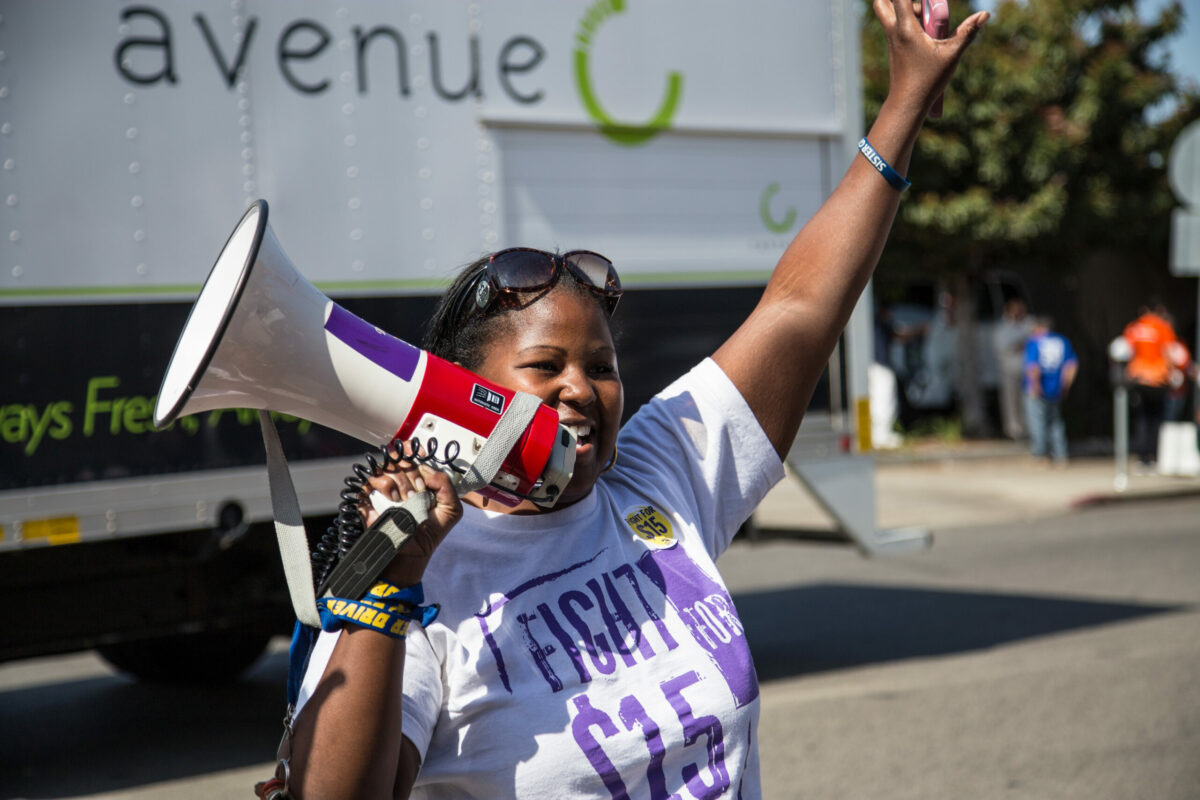The Fight for $15 grassroots labor rights movement has been applauded for years by progressive lawmakers and advocates for its tireless efforts to secure fair pay and the right to organize for all workers—and on Wednesday, new research showed how the group has been instrumental in changing the lives of tens of millions of people across the country.
The National Employment Law Project (NELP) released a report showing that since the movement began in November 2012 with a walkout by New York City fast food workers, its work has led to $150 billion in raises for 25 million workers.
“The Fight for $15 movement has brought together thousands of workers across the country, who organized and called for higher wages and union rights,” said NELP senior researcher and policy analyst Yannet Lathrop, who co-authored the report. “Our report quantifies the impact of this movement in terms of the number of workers who have benefitted, and the higher earnings they have won.”
Lathrop wrote the report with San Jose State University professor T. William Lester and University of North Carolina doctoral candidate Matthew Wilson. The authors found that with its nationwide protests, other public actions, and lobbying for legislation like the Raise the Wage Act, Fight for $15 has pressured “some of the world’s largest corporations to raise their pay scales and [transformed] public opinion.”
Since the movement was formed, dozens of cities and counties have raised their minimum wages to $15 per hour, including New York City; Sonoma, California; and Washington, D.C. Two dozen cities and counties will also adjust their minimum wages for inflation this year.
Eleven states have also adopted policies to put them on the path to a $15 minimum wage in the coming years. In Republican-controlled Florida, voters approved a constitutional amendment in November 2020 which will raise the state’s minimum wage to $15 by 2026.
The group has also pushed major employers like Amazon, Target, and Walmart to raise their minimum wages to $15 per hour—results which “had spillover effects on wages in the specific commuting zones where these employers are located,” according to a study cited in the report.
The victories won by the Fight for $15 have been particularly instrumental in helping to close racial and gender-based pay gaps. About 12 million of the workers who have earned raises due to the movement’s activism are people of color; $76 billion has gone to workers of color and $70 billion has gone to women.
“The Black and brown workers leading the Fight for $15 and a union have heroically transformed public discourse on wages, worker power, and workplace democracy—while achieving major policy wins and taking on exploitative corporations,” said NELP executive director Rebecca Dixon.
In the study, the NELP notes that despite the highly effective organizing work of Fight for $15, there are still 20 states—including Alabama, Louisiana, Mississippi, South Carolina, and Tennessee—where the federal minimum wage of $7.25 per hour is used or where there is no minimum wage.
“This is structurally racist in design and effect, as most Black workers in the U.S. live in these states,” the NELP said in a statement.
To put all workers on the path to being paid fairly, the report says, Congress must pass the Raise the Wage Act of 2021.
“The success of the movement for higher wages—demonstrated so clearly by the impact numbers highlighted in this report—only reaffirms how far out of step lawmakers in Congress are from their constituents, as they continue to refuse to raise the federal minimum wage,” the report reads.
Lathrop emphasized that the worker-led movement has won raises for millions of people despite facing “every imaginable obstacle—from a system increasingly stacked against workers and labor unions, to interference from some of the most nefarious corporations, who deployed well-paid lobbyists to fight tooth and nail against higher minimum wages.”
“But workers won in the end,” Lathrop said. “That should tell us that when workers organize, they win.”
